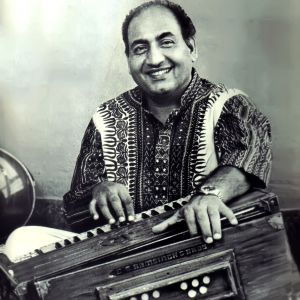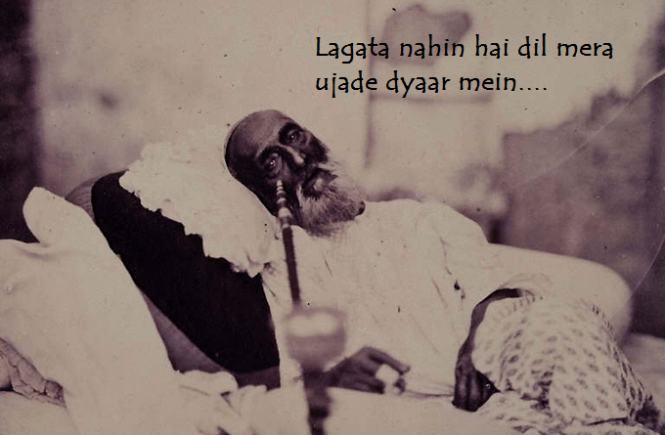Raaga Based Song of the Day: Lagta nahin hai dil mera….
Raag Yaman or Kalyan, No Tal since the entire song is an Alap.
We have completed thirteen days of Raaga Based Songs of the Day. Our first post in the series was titled ‘Raaga Based Song Of The Day #1’ and the song was a Mohammad Rafi and Lata Mangeshkar song from the 1970 Shakti Samanta movie Pagla Kahin Ka: Tum mujhe youn bhula na paoge. It is in Raag Jhinjhoti, Tal Kaherava.
Our thirteenth post or the last post was titled ‘Raaga Based Song Of The Day #13’ and the song was a Lata Mangeshkar song from the 1960 Bimal Roy movie Parakh: O sajana barkha bahaar aayi. It is in Raag Khammaj, Tal Kaherava.
This blog has a number of posts on Raaga based songs in Hindi movies titled similarly; for example: ‘The Best Raaga Based Songs in Hindi Movies – Raaga Bhairavi – Part II’.
Today, I give you a song in Raag Yaman or Kalyan. It is called Yaman in Hindustani and Kalyan or Kalyani in Carnatic music. Kalyan is the type raaga of Kalyan Thaat. It is normally performed during the first quarter of the night (late evening). The other day I told you that Bhairavi is the first Raaga that is taught to beginners. Well, Kalyan or Yaman happens to be also amongst the first few raagas that the beginners learn.
Strangely, Yaman-Kalyan is an altogether different Raaga.
Being an evening raaga, the mood is quite, meditative, even sad and rueful (eg, Woh bhooli dastaan lo phir yaad aa gayi and Woh jab yaad aaye bahut yaad aaye). It is a very popular raaga on which songs are composed in Hindi movies, as popular as Bhairavi. Some of the songs that are composed in this raaga are: Aap ke anurosh par, Aaye ho meri zindagi mein, Aaj hum apni, Aansoo bhari hain, Chale ja rahe hain, Chhupalo youn dil mein pyaar mera, Diya jalao jagmag, Ehsaan tera hoga mujh par, Ghar se nikalte hi, Hamari thodi si bewafai, Is mod se jaate hain, Jo tum todo piya, Kabhi kabhi mere dil mein, Khuda nigahbaan ho, Main kya jaanu kya jaadu hai, Man re tu kaahe na dheer dhare, Mausam hai aashiqana, Mitwa bole meethe, Mohe maro na Kanha, Na jaao sainyyan, Nigahein milane ko ji chaahta hai, Nukta chin hain, Paan khaayo sainyyan Hamaro, Re man sur mein ga, Sabere ka suraj, Woh jab yaad aaye, Woh shaam kuchh ajeeb hai, and Jab deep jale aana.
You will remember that in the second and third lessons I had told you about characteristics of raagas and Tal. You would recall that I told you that a raaga sets the mood, time and season. Tal, on the other hand is variation of the word Taali (Clap) and sets the rhythm of the song. In the earlier days, this rhythm used to be set through Clap (Bhara) or Wave (Khali) of the hand(s). Nowadays we have tabla to provide the tal (rhythm).
In today’s value-added learning, I want to tell you about this song that has no Tal (rhythm) but only Alap. hence it is important for us to know what an Alap is. Raag Kalyan or Yaman is well suited for prolonged Alap.
The first thing to know about Alap is that there is no rhythm in it; it comes before tabla starts. It can occur anywhere, but, alap is usually in the beginning. If you recall when I gave you Goonj Uthi Shehnai song Tere sur aur mere geet, I particularly asked you to listen to Lata Mangeshkar’s alap in the beginning before Ustad Bismillah Khan’s shehnai-vaadan takes over. Indeed, you can have a go at it again:
So, let’s have a look at the second thing about Alap after listening to the above. It is that Alap elaborates the raag/song to follow. Indeed, in the above example, the Alap describes the mood of the song completely. The third thing is that an Alap can be a few seconds and may last even an hour, depending upon the bandish (composition).
What about the types of Alap? Well, if an Alap doesn’t have words or bol, it is called Anakshar Alap. In case there are bol, then it is Sakshar Alap. You may recall Baiju Bawra’s famous song based on Raag Malkauns: Man tadpat Hari darsan ko aaj. Its alap has words: Hari and Om. You may have a go at even that song to learn about Alap:
You would have seen that the Alap is accompanied by Tanpura in the above song, which is generally the case. Other instruments may be added.
Now, lets decide which is more difficult: the song or the alap. I feel that the Alap is certainly more difficult to execute because of no lenience given to move away from rules; whereas songs would have (and in case of Hindi movies songs always have) some latitude about the raag.

Lastly, there was no one like Mohammad Rafi as a singer. Yes, we like Mukesh, Hemant Kumar, and Manna Dey. However, Rafi was a class apart. Please see the superb manner in which this Alap has been executed by him.
This is a song that has been penned by the Last Mughal Emperor in India: Bahadur Shah Zafar when he was captured by the British and exiled to Rangoon in Burma. In the song he laments the loss of his paradise.
His lyrics were composed into this song in the 1960 movie Laal Qila (P Jairaj acted as Bahadur Shah Zafar) by SN Tripathi.
Please enjoy: Lagta nahin hai dil mera…
Lagataa nahii.n hai jii meraa uja.De dayaar me.n
kis kii banii hai aalam-e-naa-paayedaar me.n
bulabul ko baaGabaa.n se na saiyyaad se gilaa
qismat me.n qaid thii likhii fasal-e-bahaar me.n
umr-e-daraaz maa.Ng ke laaye the chaar din
do aarazU me.n kaT gaye, do i.ntazaar me.n
kah do in hasarato.n se kahii.n aur jaa base.n
itanii jagah kahaa.N hai dil-e-daaGadaar me.n
hai kitana badanasiib zafar dafn ke liye
do gaz zamiin bhii na milii kU-e-yaar me.n
We have intended to learn about Raaga based music whilst we entertain ourselves with Raaga based songs. So, lets, once again, take stock of our collective learning so far:
- On the first day we learnt about the Raaga system devised by Pandit Vishnu Narayan Bhatkhande, which is the prevalent system in Hindustani Classical Music and based on ten Thaats.
- On the second day we learnt about Tal or Taal.
- On the third day we learnt about characteristics of Raagas that included Swar, Jati, Thaat, Arohana and Avarohana, Vadi, Samvadi and Pakad.
- On the fourth day, we learnt about Sargam.
- On the fifth day, we learnt about notations used in Indian classical music or simply Swar Lipi.
- On the sixth day, we learnt about the Ras (sentiments) that Raagas evoke.
- On the seventh day, we learnt about various types of Swar: Shuddha, Achal, Vikrut, Komal and Teevra.
- On the eighth day, we learnt the parts of a composition in Indian Classical Music.
- On the ninth day, we learnt the names of some of the popular instruments used in Indian Classical Music.
- On the tenth day, we learnt about the sources of names of Raagas.
- On the eleventh day, we learnt about why Bhairavi is the first raag to be taught to beginners and also why it is the last in a performance.
- On the twelfth day, we learnt about Khammaj Thaat.
- On the thirteenth day, we learnt about Tal Punjabi Theka or Sitarkhani.
- And today, on the fourteenth day, we learnt about Alap.
There is much more still to be learnt and enjoyed.
Please stay tuned!
